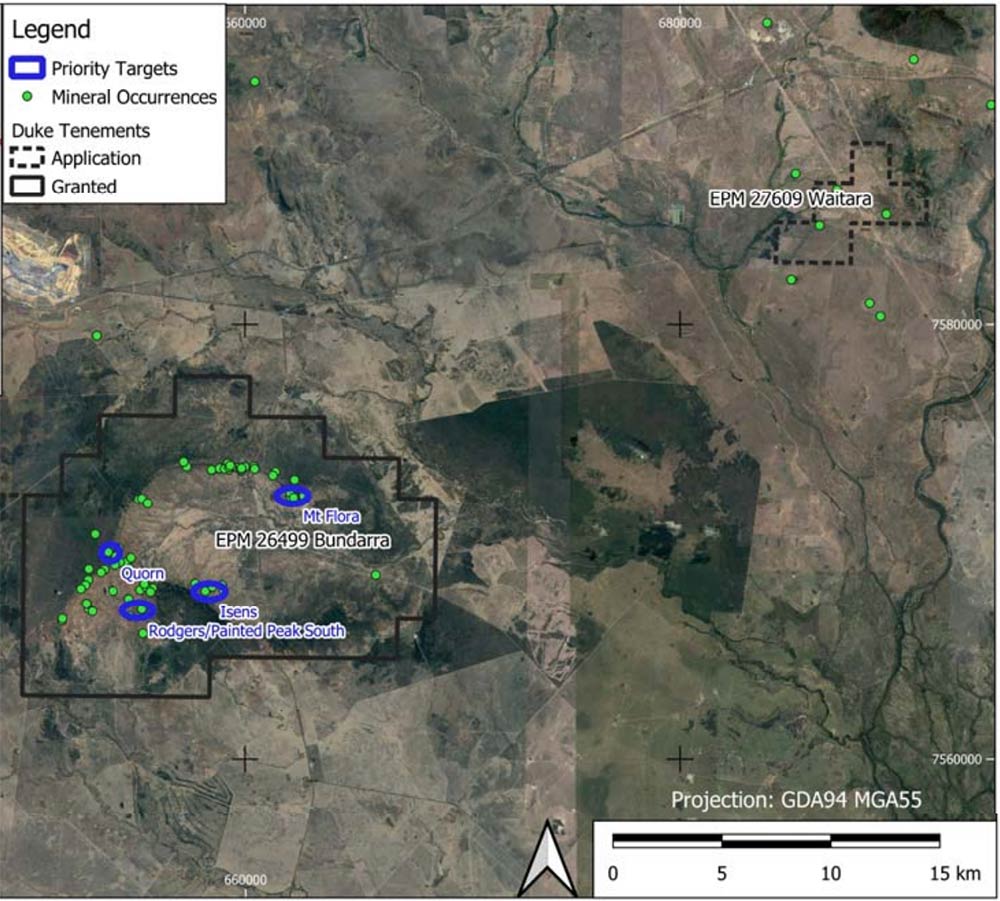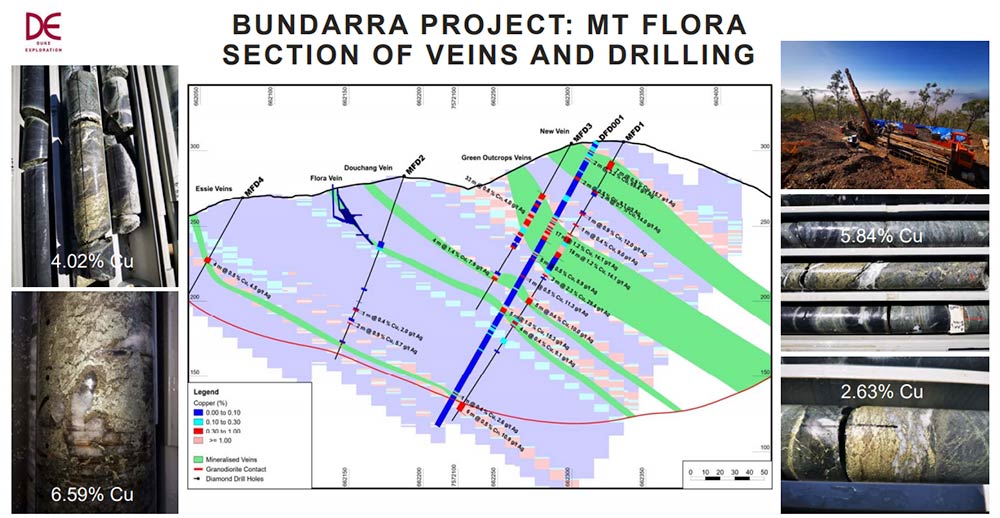Duke is drilling a copper giant ‘hidden in plain sight’
Mining
Mining
Special Report: What’s so exciting about Duke Exploration’s Bundarra copper project? Answer: It could be a very large deposit
Duke Exploration (ASX:DEX) has gained a very impressive 92 per cent since listing on the ASX mid-November.
Investors that poured into the oversubscribed $8m IPO knew Duke’s management team from the (re)discovery of the ~675,000oz Tampia gold deposit in WA.
In 2019, Explaurum – the junior which owned Tampia — was acquired by Ramelius Resources (ASX: RMS)following a hotly contested bidding war with fellow miner Alkane (ASX:ALK).
“When that all happened, quite a few of the Explaurum shareholders asked us what we were doing next,” Duke Exploration operations manager Dr Gregor Partington told Stockhead.
“We said we were looking to list this company [Duke], so they took money out of Ramelius and supported us.”
As a private company Duke was able to raise nearly $4m to do the initial work on its core projects, which is fairly unusual.
“We had half a mind to try and stay private, but in the end, it made more sense to list,” Partington says.
“It just so happened to coincide with copper and gold running hot.”
Duke listed with five copper or gold exploration projects across NSW and QLD – all attractive in their own right – but its main focus right now is Bundarra.
The Bundarra project in Queensland is a potential copper behemoth “hidden in plain sight”, Partington says.
Mineralisation around the Bundarra ‘pluton’ (the magma chamber of an extinct volcano) is classed as a lode-style porphyry mineral system, which Duke says, “can form significant tier-one deposits”.

It’s similar geologically to Stavely’s (ASX:SVY) company making Thursday’s Gossan discovery in Victoria, or the BHP and Rio Resolution copper joint venture in Arizona.
That mine started 200 years ago and is still going strong.
“What’s exciting about Bundarra? It could be absolutely enormous,” Partington says.
It is also shallow – outcropping at surface in places – relatively high grade for a porphyry system
“The mineralisation at Bundarra isn’t classic porphyry style. It is massive sulphide, almost pure chalcopyrite in the mineralised veins,” he says.
“That gives us a grade that means, from an economics point of view, it looks like a no brainer — we are going to build mines here.”
Duke has identified 56 new prospects at Bundarra adding to 47 existing historic copper, silver and gold workings.
“We have a 50km strike of prospective ground dotted with old underground workings which have had about 6 drill holes put into them,” he says.
How was the project overlooked for so long? It’s been hiding in Queensland coalfields, for one.
“There are big open cut coal mines surrounding it. The coal guys have covered the tenement areas a fair bit – but not looking for copper,” Partington says.
“This is the first time since the 1800s the whole area has been held and explored by one company for copper.
“One of the more bizarre things is that there is a major highway through the middle of our tenement.
“There’s an old sign on the side of the highway pointing to the Mt Flora mine, the main area we are exploring at the moment.
“It’s a bit hard to say we discovered that. We just followed the sign.”
Mt Flora, Australia’s highest-grade copper mine in the 1800s, is an early stage development opportunity for Duke.
All holes drilled at Mt Flora so far have hit visible copper in stacked mineralised zones, from surface to 230m ‘down dip’. Drilling is ongoing.
The work we have already done shows Mt Flora could be twice as big — there could be 300,000 tonnes of copper there, from surface to 200m – 300m deep.”

Duke recently made a new discovery 500m from Mt Flora called ‘The Quarry’, almost by accident.
Nine holes at the Quarry all intersected visible chalcopyrite copper mineralisation over a strike of 200m. Assays are pending.
The Quarry, literally an old gravel pit, was another target hidden in plain sight.
“We had walked around this quarry a dozen times before we worked out that the whole area was covered with 0.1- 0.2 per cent copper,” Partington says.
“Gravel from the Quarry was used as road base, which means the roads around this area are paved in copper.”
Then there are the undrilled targets at Bundarra that make Mt Flora look small, Partington says.
“There’s one we are doing geophysics on right now looks much bigger than Mt Flora,” Partington says.
“We just went out there to have a look and there is [outcropping] copper everywhere.”
Duke started drilling at Bundarra just over a month ago and won’t be stopping for the foreseeable. Just by doing the work Duke will find new things, Partington says.
“We aren’t letting this rig go,” he says.
“Bundarra is going to keep us busy for a long time. We started drilling a few weeks ago and we will still be drilling this time next year.”
This article was developed in collaboration with Duke Exploration, a Stockhead advertiser at the time of publishing.
This article does not constitute financial product advice. You should consider obtaining independent advice before making any financial decisions.